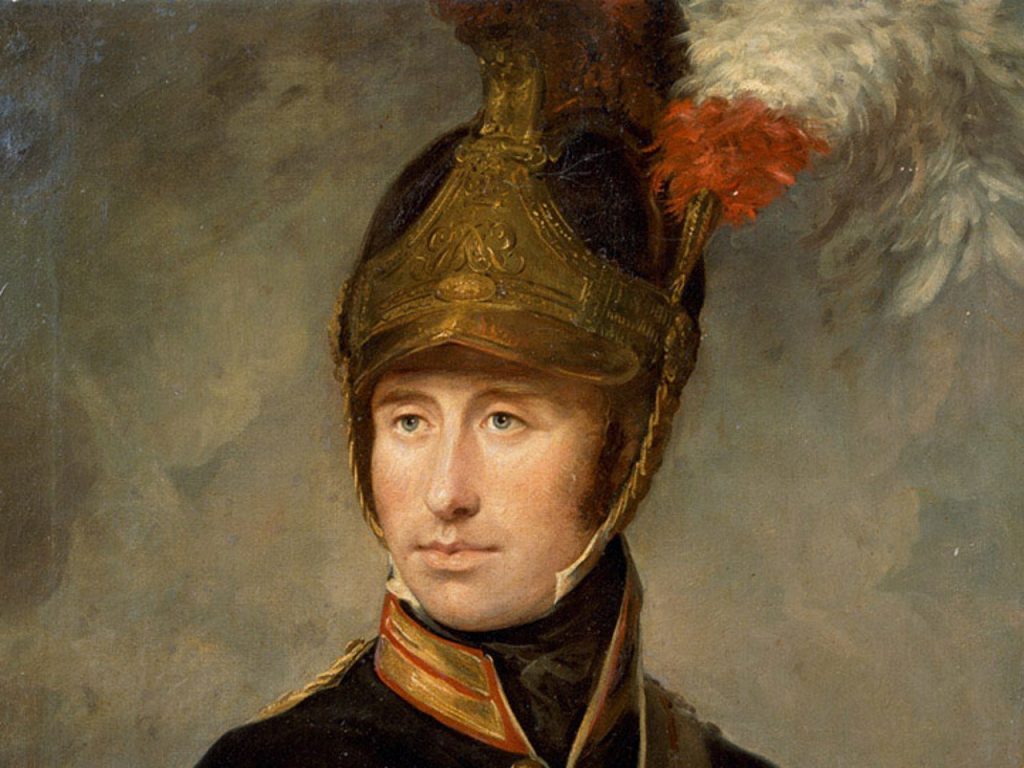The recent article “An Heirloom Comes Home” by Barney Tyrwhitt-Drake published in the Society’s September 2019 Newsletter has sparked a lot of interest among our members. The fascinating story of his great great grandfather, William Tyrwhitt-Drake, a Cavalry officer at Waterloo, was told through the 200 year history of his campaign chest.
This is not the first time that William Tyrwhitt-Drake’s Waterloo possessions have became the focus of our attention. In 2002, shortly after the National Army Museum acquired a collection of the most historically interesting artefacts belonging to him, the following article was published in the Society’s Newsletter:

Our thanks go to Peter Leslie of Great Missenden, who forwarded the following article which appeared in the National Army Museum Newsletter recently.
The Museum is located in Royal Hospital Road, just beyond the Royal Hospital.A CAVALRY OFFICER AT WATERLOO
A magnificent collection of relics relating to a Household Cavalry officer at Waterloo was recently purchased by the National Army Museum. Captain William Tyrwhitt-Drake was among the twenty officers and 255 men from the Royal Regiment of Horse Guards that served in the Waterloo campaign. Many of the relics relate to his participation in the battle, including his 1796 Pattern heavy cavalry officer’s service sword and scabbard. The original hatchet blade has been ground down to a spear point, a modification made before the battle to create a more effective thrusting weapon. An affectation of many Household Cavalry officers was that their swords remained in bare metal, without maker’s names or regimental inscriptions.
Among the other items are a travelling inkstand, a paper candle lantern, a presentation horse’s hoof and William’s Waterloo Medal. Also included are the helmet and sabretache he is believed to have worn in the battle and an oil portrait of him wearing this helmet.
William was the second son of Thomas Tyrwhitt-Drake of Shardeloes near Amersham. He had served in the Newport Pagnell Volunteers and the 1st (or Southern) Regiment of Buckinghamshire Volunteers before purchasing a commission in the Royal Horse Guards for £1600. He joined the regiment in September 1805. The Royal Horse Guards in the Waterloo campaign formed part of the Household Brigade under Major-General Lord Edward Somerset. The Brigade, along with the rest of the British cavalry, did not arrive in time for the preliminary battle of Quatre Bras on 16th June, but was heavily engaged at Waterloo two days later. Along with the Union Brigade, it made a spectacular charge in the early afternoon that smashed a serious attack by the French I Corps on Wellington’s eastern wing. The Royal Horse Guards began the charge and helped cover their withdrawal after it was over.
William reached the rank of Lieutenant-Colonel in June 1820, retired from the Army in May 1826, and died in 1848. His relics, which were purchased with the help of the Friends of the National Army Museum, are now on display in the Museum’s ‘Road to Waterloo’ Gallery.
May 2002 Newsletter
